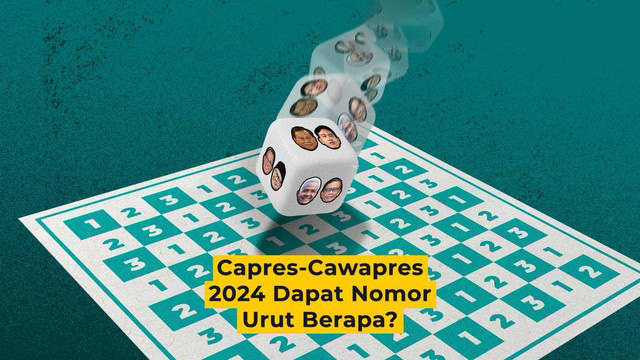Unlocking Hidden Patterns in Randomness Through Data Analysis
Building upon our foundational understanding of how distributions shape our perception of chance and gaming scenarios, it becomes evident that the universe of randomness is far richer than mere probability curves. While classical models like the normal, binomial, or Poisson distributions provide essential frameworks, real-world complexities often conceal subtle, non-obvious patterns that can be exploited or understood through advanced data analysis techniques. This progression from basic distributions to uncovering hidden structures marks a significant evolution in how we interpret randomness, especially in complex systems such as financial markets, strategic games, or biological processes.
1. The Limitations of Traditional Distribution Analysis in Complex Systems
Classical probability distributions excel at modeling systems with well-understood stochastic behavior, yet they often fall short when applied to multifaceted real-world phenomena. For instance, financial returns may follow a heavy-tailed distribution rather than a normal curve, indicating that extreme events occur more frequently than predicted by traditional models. Similarly, in gaming environments, outcomes may seem random but are subtly biased due to equipment imperfections or player strategies.
Relying solely on these standard models can lead to misinterpretations, underestimating risks or missing opportunities. As an example, casinos have used detailed data analysis to identify roulette wheels with slight imperfections—hidden patterns that, once detected, can be exploited to improve odds. This demonstrates that traditional models, while useful, are often insufficient for uncovering the full spectrum of randomness and bias present in complex systems.
2. The Power of Data Analysis in Revealing Subtle Patterns
Advancements in data collection and processing enable analysts to go beyond surface-level distributions. Techniques such as time-series analysis, spectral methods, and anomaly detection algorithms can identify recurring motifs or irregularities that traditional methods overlook.
For example, in stock market data, high-frequency trading algorithms analyze micro-patterns in price movements, revealing fleeting trends that suggest deterministic influences rather than pure chance. These insights help traders develop strategies that capitalize on subtle biases, which would be invisible through basic probability assessments alone.
3. Techniques for Detecting Hidden Patterns in Noisy Data
Identifying hidden structures in noisy datasets requires sophisticated tools:
- Multivariate statistical methods: Principal Component Analysis (PCA) and Independent Component Analysis (ICA) help reduce dimensionality and uncover underlying factors.
- Machine learning algorithms: Supervised and unsupervised models, such as neural networks and clustering algorithms, detect patterns amid randomness.
- Visual analytics: Heatmaps, scatter plots, and dynamic dashboards facilitate intuitive recognition of anomalies or clusters.
A practical example includes using machine learning to analyze gaming data, where subtle player behaviors and environmental factors interact in complex ways. Recognizing these patterns enables game designers or analysts to adjust algorithms or strategies for better outcomes.
4. Case Studies: Uncovering Hidden Patterns in Games and Simulations
a. Analysis of Random Game Outcomes
In certain card games, statistical analysis of thousands of hands can reveal non-random distributions of shuffles, hinting at biases in dealing mechanisms. For example, a study on online poker data uncovered slight but consistent patterns in card sequences, allowing skilled players to optimize their strategies.
b. Simulation Data and Bias Detection
Simulations in complex systems, such as climate models or neural network training, often produce large datasets where hidden biases influence results. By applying sensitivity analysis and pattern recognition, researchers detected that certain initial conditions consistently led to divergent outcomes, revealing deterministic influences masked by stochastic noise.
c. Lessons from Successful Pattern Detection
These case studies illustrate that persistent, methodical analysis can transform our understanding of seemingly random phenomena. Key lessons include the importance of high-quality data, the use of multi-layered analytical approaches, and the necessity of contextual awareness to interpret findings accurately.
5. The Role of Context and External Factors in Pattern Emergence
Randomness in natural and artificial systems rarely exists in isolation. External variables—such as environmental conditions, hardware imperfections, or user behavior—play crucial roles in shaping observed outcomes. For example, temperature fluctuations can subtly affect the fairness of physical roulette wheels or the performance of electronic gaming devices.
Incorporating contextual data enhances pattern detection by filtering out noise and focusing on relevant influences. For instance, analyzing weather data alongside agricultural yield patterns can reveal climatic factors that modulate crop success rates, transforming apparent randomness into predictable trends.
6. Implications for Predictive Modeling and Decision-Making
When hidden patterns are uncovered, predictive models can be significantly improved. In gambling, this might translate into better betting strategies; in finance, more accurate risk assessments; and in scientific research, more reliable forecasts.
However, reliance on such patterns carries risks. Overfitting, data snooping, or misinterpreting coincidental alignments can lead to false confidence. Ethical considerations also emerge, especially when exploiting behaviors or biases that may harm others or violate fairness principles.
7. Bridging Back to Distributions: Reinforcing Our Understanding of Chance
Discoveries of hidden patterns often prompt a reassessment of classical distribution models. For example, recognizing that a seemingly normal distribution of returns actually exhibits skewness or kurtosis leads to the development of more nuanced probabilistic frameworks.
By integrating pattern-based insights into traditional models, analysts can create hybrid approaches that better reflect reality. This cyclical relationship—where understanding distributions informs pattern detection, which in turn refines models—drives the evolution of probabilistic science.
| Model Type | Characteristics | Application Examples |
|---|---|---|
| Normal Distribution | Symmetric, bell-shaped; applies when many small independent factors influence an outcome | IQ scores, measurement errors |
| Heavy-Tailed Distributions | Higher probability of extreme events; such as Cauchy, Pareto | Financial crashes, natural disasters |
| Poisson Distribution | Models count data over fixed intervals; discrete events | Call arrivals, radioactive decay |
8. The Future of Data-Driven Discovery in Randomness and Games
Emerging technologies such as quantum computing, advanced machine learning, and real-time data analytics promise to revolutionize our capacity to detect and interpret hidden patterns. These tools will enable us to analyze vast datasets with unprecedented speed and precision, revealing insights that were previously inaccessible.
As our analytical capabilities grow, so does our understanding of chance—shifting from viewing randomness as purely unpredictable to recognizing it as a domain where subtle, deterministic influences can be uncovered and leveraged. This ongoing evolution underscores the importance of continually refining our models and approaches, always aware that beneath the veneer of randomness lies a complex, interconnected structure waiting to be deciphered.
For those interested in the foundational principles, revisiting How Distributions Shape Our Understanding of Chance and Games offers a comprehensive overview of the essential concepts before diving into these advanced analytical frontiers.


















